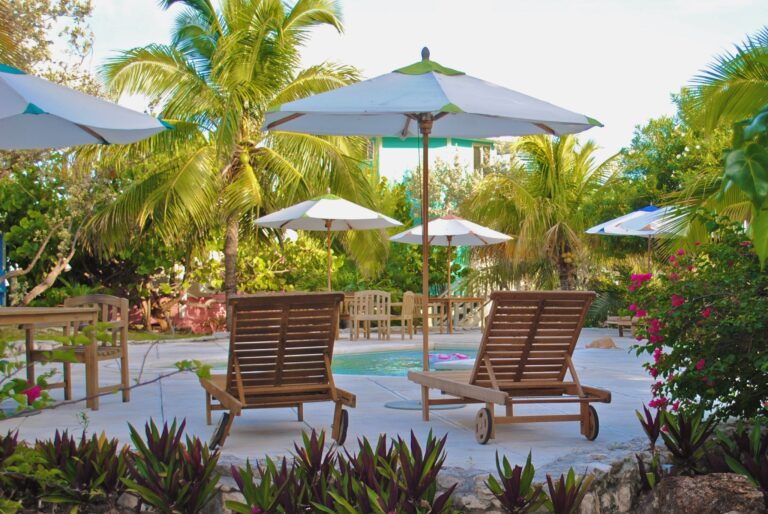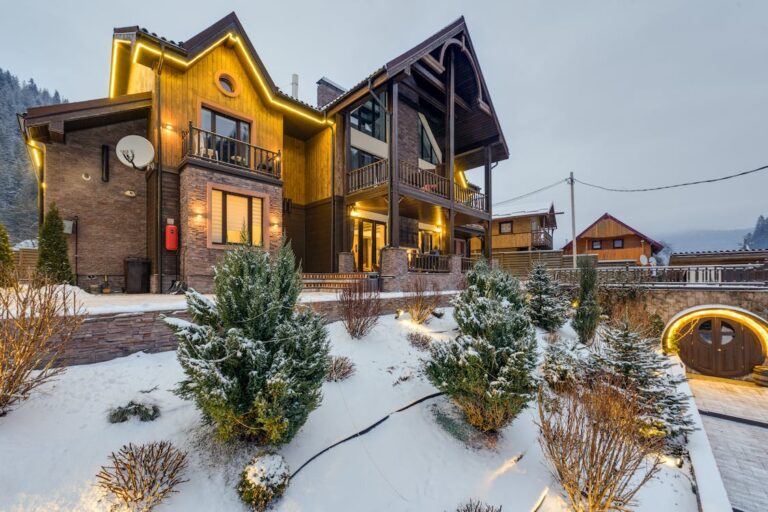
Contents
- 1 Understanding Shade and Its Effects on Plants
- 2 Top Low-Light Patio Plants for Shade
- 3 Shade-Loving Flowers for Stunning Patio Displays
- 4 Top Low-Light Patio Plants for Shade
- 5 Shade-Tolerant Herbs for Flavorful Patio Gardening
- 6 Container Gardening in Shady Patios
- 7 Tips for Caring and Maintaining Shade Plants on Patios
- 8 Conclusion
Welcome to my ultimate guide for the best patio plants for shade! If you have a shaded outdoor space and are looking for ways to add greenery and beauty to it, you’ve come to the right place. In this guide, I’ll introduce you to a variety of shade-loving plants that are perfect for outdoor patios, no matter the size or location. From low-light plants to shade-tolerant herbs, you’ll find everything you need to create a lush and vibrant patio garden in the shade.
Key Takeaways:
- Shaded patios can still be beautiful with the right plants.
- There are a variety of shade-loving plants to choose from for your patio.
- Low-light plants, shade-tolerant herbs, foliage plants, and shade-loving flowers are great options for shady patios.
- Container gardening is an excellent way to create a compact but stunning patio garden in the shade.
- Caring for and maintaining your shade plants is essential for their growth and longevity.
Understanding Shade and Its Effects on Plants
Gardening in the shade can be a challenge, especially if you’re new to patio gardening in shade. But with the right knowledge and planning, you can create a beautiful and thriving shade garden on your outdoor patio. In this section, I’ll cover everything you need to know about patio gardening in shade, including shade-tolerant plants for outdoor patios.
Types of Shade
Shade comes in different forms, and it’s essential to understand the type of shade your patio receives to select the right plants. Here are the four types of shade:
- Filtered or partial shade – this type of shade provides filtered sunlight through a tree canopy or other materials, and it allows for dappled sunlight to reach the ground.
- Deep shade – deep shade occurs under trees or other structures that block most or all sunlight. This type of shade is the most challenging to grow plants.
- Wet shade – sometimes known as boggy or moist shade, this type of shade occurs in areas with high moisture levels, like near ponds or streams.
- Dry shade – dry shade refers to areas without irrigation or rainfall, such as under eaves or near walls that block rainwater.
Shade-Tolerant Plants for Outdoor Patios: Best Patio Plants for Shade
When choosing plants for your shaded patio, it’s critical to select shade-tolerant plants that can thrive in low light conditions. Here are some of the best patio gardening in shade plants:
| Plant Name | Light Requirements | Description |
|---|---|---|
| Hostas | Partial to full shade | Hostas are a classic shade-loving perennial with beautiful foliage and low-maintenance needs. |
| Begonias | Partial to full shade | Begonias are a colorful and easy-to-grow annual that thrives in patio gardening in shade. They come in a wide variety of colors and sizes. |
| Astilbe | Partial to full shade | Astilbe is a shade-loving perennial that produces plume-like flowers in shades of pink, red, and white. It requires moist soil and regular watering. |
| Ferns | Partial to full shade | Ferns are a classic choice for patio gardening in shade. They come in a variety of shapes and sizes and are ideal for creating a lush and tropical feel on your patio. |
| Heuchera | Partial shade | Heuchera, also known as coral bells, is a shade-loving perennial with colorful foliage and delicate flowers. |
These are just a few examples of shade-tolerant plants for outdoor patios. It’s essential to research and choose the right plants for your specific shade conditions and patio space.
Now that you understand the types of shade and have discovered some best patio plants for shade, you can start planning your shaded patio garden. With patience, care, and attention, you’ll be able to create a beautiful and thriving garden on your patio, regardless of the amount of sunlight it receives.
Top Low-Light Patio Plants for Shade
If your patio doesn’t get much sunlight, you might think your options for outdoor plants are limited. However, there are many beautiful and unique patio plants for low-light areas that will thrive even in the shade. These plants are perfect for creating a shade garden on your patio, and they can add a touch of color and greenery to your outdoor space. Here are some of my top picks for low-light patio plants:
| Plant Name | Description |
|---|---|
| Hosta | A popular shade plant that comes in various colors and patterns. Hostas are low maintenance and require minimal sunlight. |
| Caladium | A tropical plant that adds a pop of vibrant colors to your patio. Caladiums prefer shade and can be grown in pots or hanging baskets. |
| Bleeding Heart | A classic shade-loving plant known for its heart-shaped pink or white flowers. Bleeding hearts add a touch of romance to your patio. |
| Heuchera | A versatile plant with stunning foliage colors ranging from purple to silver. Heucheras are perfect for adding texture to your patio garden. |
If you’re looking for more shade garden ideas for patios, consider planting ferns, impatiens, or begonias. These plants are also great for low-light areas and can be used to create a lush and vibrant patio garden.
When planting patio plants for low-light areas, it’s important to remember that they still require some sunlight. Make sure to place your plants where they’ll receive some natural light or provide supplemental lighting if necessary. Additionally, be mindful of watering your plants. Low-light plants don’t need as much water as sun-loving plants, so make sure you don’t overwater them.
With these top low-light patio plants for shade, you can transform your shady outdoor space into a beautiful and peaceful retreat. Experiment with different shades, textures, and colors to create a unique and stunning patio garden that you can enjoy all year round.
Shade-Loving Flowers for Stunning Patio Displays
If you’re looking to add a pop of color to your shaded patio, consider incorporating shade-loving flowers into your outdoor decor. These plants not only provide vibrant colors but also add a touch of elegance and sophistication. Here are some of my favorite shade-loving flowers that are perfect for creating stunning displays on your patio:
Impatiens
“Impatiens are a classic shade-loving flower that comes in a variety of colors, including pink, red, orange, white, and purple. They are a top choice for shady patios because they are low maintenance and bloom for months on end.”
| Pros: | Cons: |
|---|---|
| Easy to grow and maintain | Can be susceptible to downy mildew |
| Provides non-stop color for months | Can be susceptible to aphids and spider mites |
| Thrives in containers and hanging baskets |
Also Read Best Low Maintenance Patio Plants: Stylish/StressFree (2024)
Begonias
“Begonias are another shade-loving flower that come in various colors, including pink, red, orange, and white. They have beautifully shaped petals and add a touch of elegance to any space.”
| Pros: | Cons: |
|---|---|
| Comes in a variety of colors and shapes | Can be susceptible to powdery mildew |
| Low maintenance | May require regular deadheading |
| Thrives in containers and hanging baskets |
Coleus
“Coleus is a unique shade-loving plant that comes in a variety of colors and patterns. Its leaves are its main attraction, and they come in various shades of green, pink, purple, and red.”
| Pros: | Cons: |
|---|---|
| Provides different colors and patterns | Can be susceptible to spider mites and whiteflies |
| Low maintenance | May require regular pruning to maintain shape |
| Thrives in containers and hanging baskets |
These shade-loving flowers are just a few examples of how you can add color and beauty to your shaded patio. Experiment with different combinations and arrangements to create a unique and stunning display that reflects your style and personality. With the right care and attention, your shade-loving flowers will thrive all summer long!
Also Read Best & Easy Outdoor Hanging Plants Year Round (In 2024)
Top Low-Light Patio Plants for Shade
If your patio doesn’t receive much sunlight, don’t worry! There are plenty of shade-loving plants that will thrive in low-light areas. Here are some top plants for shady patios:
| Plant | Light Requirements | Description |
|---|---|---|
| Hostas | Shade to partial sun | With their large leaves and diverse range of colors, hostas are a great addition to any shaded patio garden. They are low-maintenance and can even handle occasional droughts. |
| Ferns | Shade to partial sun | Ferns love low-light areas and their feathery fronds can add a delicate touch to any patio garden. Boston ferns are a popular choice for their graceful arching form. |
| Caladiums | Shade to partial sun | Caladiums are known for their striking heart-shaped leaves with vibrant colors. They love shade and are perfect for adding a pop of color to a shady patio. |
| Heucheras | Partial shade to full shade | Heucheras, also known as coral bells, come in a variety of colors and are easy to grow. They can tolerate a range of light conditions, making them a versatile choice for any patio. |
These low-light patio plants for shade are just a few examples of the many options available. You can also consider adding ivy, hellebores, or even a small Japanese maple tree to your patio garden.
When planting in low-light areas, it’s important to make sure the soil is well-draining and not waterlogged. A layer of organic mulch can help retain moisture and keep the soil cool.
With these top plants for shady patios, you can create a lush and inviting outdoor living space, even in the shadiest of areas.
Shade-Tolerant Herbs for Flavorful Patio Gardening
If you love cooking with fresh herbs, you’ll be glad to know that there are plenty of shade-tolerant herbs that are perfect for patio gardening. These herbs not only add flavor to your favorite dishes but also provide a lovely aroma to your outdoor living area. In this section, I’ll introduce you to the best shade-loving plants for patios that are also herbs.
Basil
One of the most popular herbs, basil is a versatile plant that comes in many varieties, including sweet basil and Thai basil. Basil requires only a few hours of sunlight per day and can grow well in partial shade, making it perfect for patio gardening. Use it to make homemade pesto or add it to your favorite pasta dishes for a burst of flavor.
Mint
If you enjoy fresh, minty flavors, consider growing mint in your shaded patio. Mint is a hardy herb that can tolerate partial shade and moist soil. It’s perfect for making refreshing summer drinks or adding to salads and desserts.
Parsley
Parsley is a wonderful herb that can add a vibrant green color and subtle flavor to any dish. It can tolerate partial shade and moist soil, making it a great choice for patio gardening. Use it to garnish your favorite dishes or chop it up and add it to soups and stews.
Cilantro
Cilantro is a popular herb in Mexican and Asian cuisines, and it can grow well in shady patios. It requires well-drained soil and a few hours of morning sunlight, but it can tolerate partial shade in the afternoon. Use cilantro to add a zesty flavor to your favorite salsa or guacamole.
There you have it, the best shade-tolerant herbs for your patio gardening needs. The great thing about these plants is that they not only provide fresh flavor to your cooking but also make your outdoor living space smell wonderful. Experiment with these herbs and see how they can elevate your patio to the next level.
Container Gardening in Shady Patios
If you have limited space on your patio but still want to enjoy the beauty of shade-loving plants, container gardening is the perfect solution. You can create a stunning garden in even the smallest of spaces with the help of the best shade plants for patio containers.
The key to successful container gardening is selecting the right size and type of container for your plants. You will need a container that is large enough to accommodate your plant’s root system and has drainage holes to prevent waterlogging.
Best Shade Plants for Patio Containers
| Plant Name | Features |
|---|---|
| Ferns | Easy to grow; adds lush texture to outdoor spaces |
| Hostas | Low-maintenance; ideal for creating a stunning foliage garden |
| Impatiens | Produces colorful flowers throughout summer; thrives in shady areas |
| Begonias | Drought-tolerant; produces beautiful blooms in a variety of colors |
| Heucheras | Adds a splash of color to shady areas; easy to grow in containers |
These plants are perfect for creating a beautiful and thriving container garden in your shaded patio. Be sure to choose plants that have similar water and light requirements to ensure their overall health and growth.
When it comes to container gardening, proper maintenance is key to keeping your plants healthy and thriving. Regular watering and fertilizing are essential, especially during hot summer months.
Overall, container gardening is a great way to add greenery and beauty to your shaded patio. With the right combination of plants and proper care, you can create a stunning container garden that you can enjoy all season long.
Tips for Caring and Maintaining Shade Plants on Patios
Once you’ve chosen the best patio plants for shade, it’s important to take care of them properly to ensure they thrive in your outdoor living space. Here are some valuable tips on watering, fertilizing, and pruning your shade-loving plants.
Watering Your Shade Plants
Shade plants typically require less water than plants that thrive in direct sunlight. However, the frequency of watering will depend on the specific plant and its soil conditions. As a general rule, it’s best to keep the soil consistently moist but not waterlogged. A good indicator is to check the soil with your finger. If the soil feels dry to the touch, it’s time to water.
When watering, it’s important to avoid getting water on the leaves as this can lead to fungal diseases. Instead, aim for the soil around the base of the plant. A soaker hose or drip irrigation system can be an efficient way to water your shade plants without getting the leaves wet.
Fertilizing Your Shade Plants
Shade-loving plants have lower nutrient requirements than plants that grow in direct sunlight. However, fertilizing can help promote healthy growth and vibrant foliage. It’s best to fertilize your shade plants in the spring and summer when they are actively growing.
A balanced, slow-release fertilizer is a good choice for most shade plants. Be sure to follow the manufacturer’s instructions for application rates and frequency. Over-fertilizing can lead to leaf burn and can be detrimental to the plant’s health.
Pruning Your Shade Plants
Pruning can help encourage healthy growth and keep your shade plants looking their best. It’s best to prune your plants in the late winter or early spring before new growth begins.
Remove any dead or diseased branches, as well as any crossing branches. This will help improve air circulation and reduce the risk of fungal diseases. If necessary, you can also prune to shape your plants or to control their size. Be sure to use clean, sharp pruning shears to avoid damaging the plant.
Choosing the Right Containers
If you’re growing shade-loving plants in containers on your patio, it’s important to choose the right containers. The container should be large enough to accommodate the plant’s root system and provide adequate drainage. Avoid using containers that are too small, as this can lead to root-bound plants and poor growth. Ensure containers are weather resistant and ideally match your patio decor.
Finding the Right Soil
Choosing the right soil for your shade plants is essential for their growth and health. It’s best to use a high-quality potting mix that is formulated for container gardening. Avoid using garden soil or topsoil in containers, as they can become compacted and prevent proper drainage.
Shade-loving plants generally prefer slightly acidic soil with a pH between 5.5 and 6.5. You can adjust the pH of your soil if necessary with amendments such as sulfur or lime.
With the right care, your shade-loving plants will thrive in your outdoor patio space, adding beauty and greenery to your shaded oasis.
Conclusion
I hope this guide on the best patio plants for shade has been helpful to you. By now, you should have a good understanding of how shade affects plants and have discovered a variety of shade-loving plants that are perfect for your patio.
Remember, when choosing plants for your patio, it’s essential to consider the amount of shade your outdoor living space receives. Whether you prefer low-maintenance foliage or colorful flowers, there’s a shade-tolerant plant for everyone.
Final Thoughts
As a professional copywriting journalist, I know the importance of creating a beautiful and functional outdoor living space. A patio garden filled with lush greenery and vibrant flowers is an excellent way to add beauty and tranquility to your home.
With the right care and attention, your patio garden will thrive year after year. Remember to water and fertilize your plants regularly and provide adequate pruning as necessary. And, most importantly, don’t be afraid to experiment with different plants and garden styles to create a patio garden that reflects your unique personality and style.
Best of luck on your patio gardening journey!






4 Comments